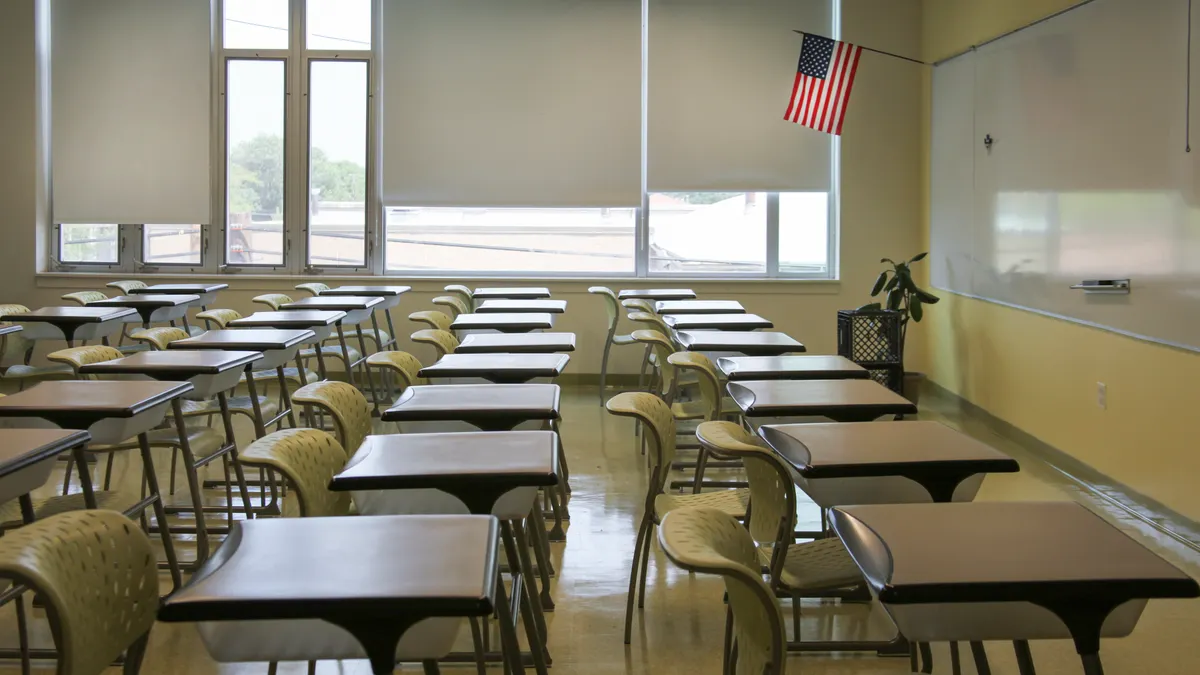Dive Brief:
- For each student who is chronically absent in California schools, there's a $5,630 economic burden to the community, according to a report released Wednesday by the University of Pennsylvania Graduate School of Education's Center for Benefit-Cost Studies.
- Each expulsion costs $70,870 in social burdens such as increased likelihood of dropping out, said the report, which was developed with the University of California, Los Angeles' Center for the Transformation of Schools.
- Using state, school and student data, researchers calculated the total economic burdens and gains resulting from factors such as graduation rates, school attendance and disciplinary infractions. To improve those factors and offset burdens, the report calls for more equitable opportunities for student success, as well as efficiency-based reforms like the use of a multi-tiered system of supports framework.
Dive Insight:
Like many other localities, California's chronic absenteeism rate rose because of the COVID-19 pandemic. In the 2019-20 school year, the state's chronic absenteeism rate for all students was 10%, compared to 30% in 2021-22, which was the same rate nationally. The report uses a common definition of chronic absenteeism, which is when a student misses 10% of the school year, or about 18 days.
The report also calculates that each suspension costs $27,260 and each disciplinary restraint adds up to $6,040. The economic burden for each student who does not graduate high school is $478,440.
On the other hand, a 3 percentage point increase in California's high school graduation rate would add almost $10 billion to state coffers and $3 billion in taxpayer savings.
To calculate these financial burdens and gains, researchers used an economic model that accounts for all the resources that are needed or contributed to for each educational status over an individual’s working life.
For example, the lifetime social gain of an 18-year-old who graduates high school is $478,440, or $681,930 if the student enrolls in college, according to the report. A variety of factors are taken into consideration in this calculation, including the estimation of higher earnings with additional education and the assumption of reduced criminal activity, improved health status and less reliance on a social safety net.
A. Brooks Bowden, an associate professor of educational policy at the University of Pennsylvania and director of the Center for Cost-Benefit Studies of Education, said the study's findings in California are an indication of potential economic burdens nationwide.
"Addressing these challenges can lead to substantial savings and improved educational outcomes across the country," said Bowden in a statement.
The report also said multi-tiered system of supports holds the promise of efficiency in education, because rather than schools delivering extensive support to all students, the MTSS framework provides resource-intensive supports to students with the highest need, as well as equitable services because interventions are individualized based on data.
The MTSS framework has been used by districts across the country to address stubborn absenteeism rates. This approach — which begins with universal supports and increases the intensity of interventions based on student needs — is also promoted by Attendance Works, a nonprofit that provides school attendance resources.














